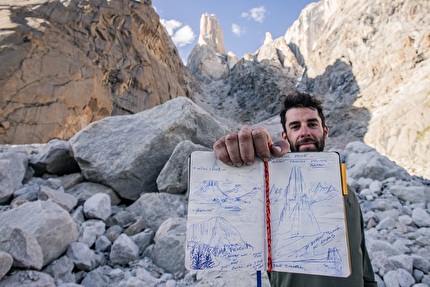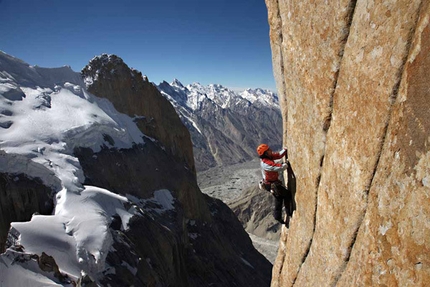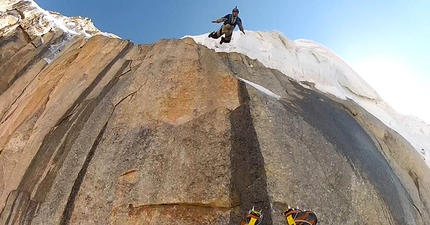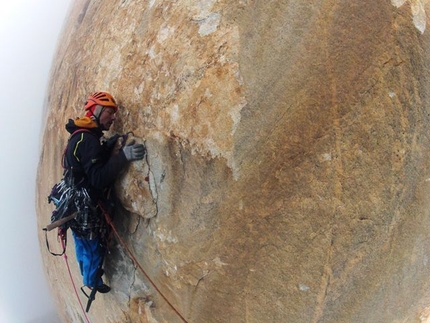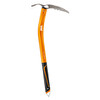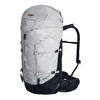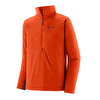Rare repeat of Grand Diedre Desplomando on Trango Tower, the Nameless Tower of the Karakorum
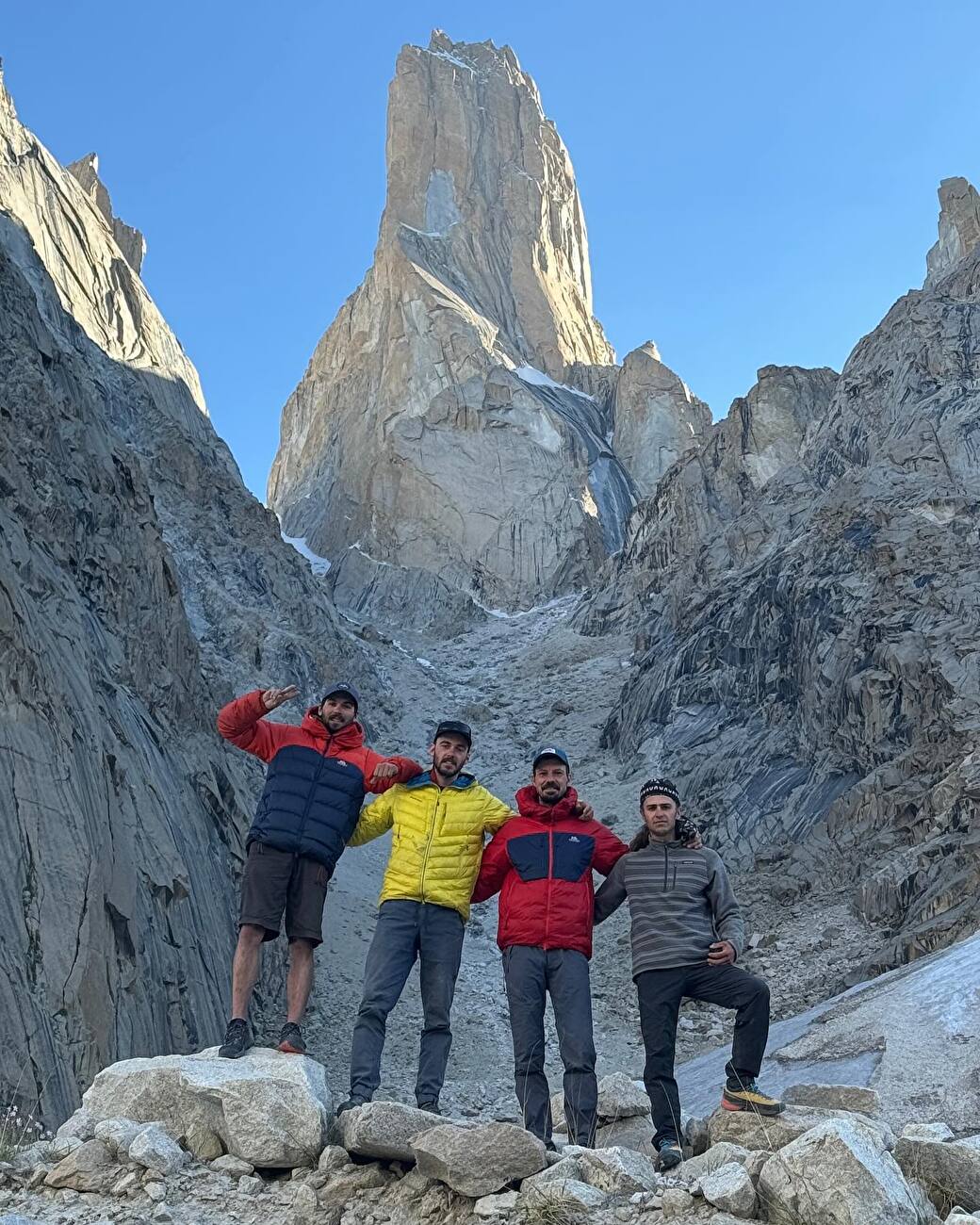
 1 / 21
1 / 21 Planetmountain
Planetmountain
On 23rd of July 2024 at 23:45 Martin Krasňanský, Michal Mikušinec, Tomáš Buček from Slovakia and František Bulička from the Czech Republic stood on the summit ridge of Trango Tower, also referred to as Nameless Tower, having completed the second repeat of Grand Diedre Desplomado. This huge 1100m line follows the mountain's West Pillar and was first ascended in June 1987 with a mix of free climbing and aid by Michel Piola and Stéphane Schaffter of Switzerland and Patrick Delale and Michel Fauquet of France. It is worth noting that after reaching the summit, Fauquet made the first paraglider descent of Trango Tower by launching off the west shoulder as Piola and Delale held his wing in position.
In August 2006 Grand Diedre Desplomando was repeated for the first time, and almost climbed free, by Swiss team comprised of Francesco Pellanda, Giovanni Quirici and Christophe Steck. The trio summited after twelve days of hard work and five nights on the wall, having climbing everything free except for pitches 13 (A4), 15 (A3) and 16 (A3).
Writing to planetmountain, Bulička explained "We climbed capsule style and spent 13 days on the wall in total, 10 of which were consecutive. The difficulties we climbed check in at 7b+ and A3. The route crosses the west face and covers 1100m of mostly overhanging wall, which makes it the longest and steepest route on the tower. The entire route is split into only 25 pitches, so each pitch averages around 50m, which is kinda crazy.
The goal was to try free climb every pitch… we tried hard and free climbed all the way to the (crux) pitch 13. This pitch was climbed AF (all the moves free, but not redpoint) in 2006 at 8a+/?. Aiding it at A3, with almost no experience of this sort of climbing, was an intense, 5-hour experience. Freeing this 55m overhanging endurance beast was unfortunately impossible given the conditions we were faced with, even with two 9a climbers on the team. It snowed almost everyday and was freezing cold for the 13 days we were on the wall. From that point on, climbing to the top seemed to be a big enough challenge. We definitely improved our aiding skills, going from almost no experience to A3 in just a few days! In any case, even if we had sent pitch 13, the headwall wouldn’t have been possible to climb free due to hard aid, the icy cracks and snowy ledges.
The entire ascent was a tough alpine "job" with only a few pleasurable climbing moments, but it was totally worth it as it resulted in the biggest adventure of our lives!"



 Copia link
Copia link

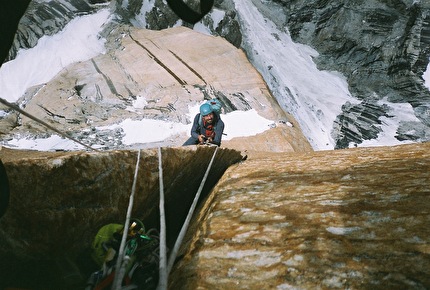
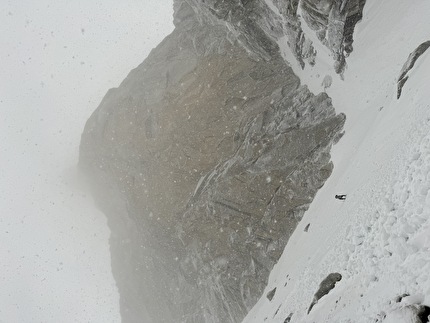
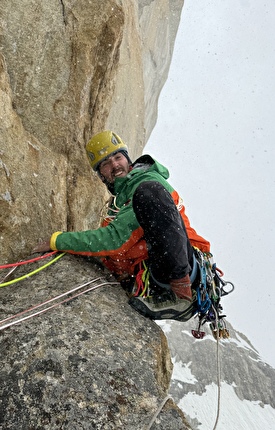
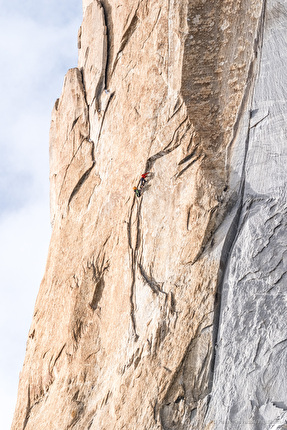
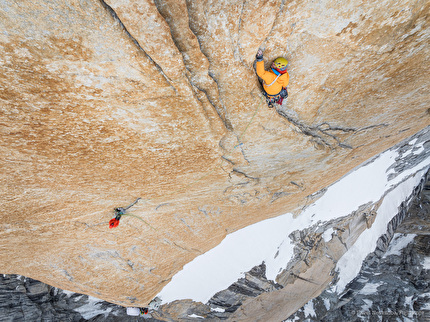
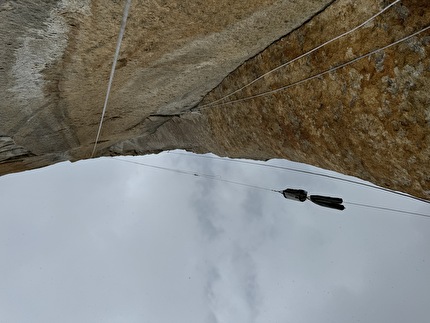
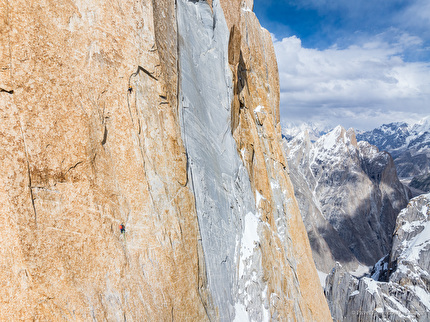
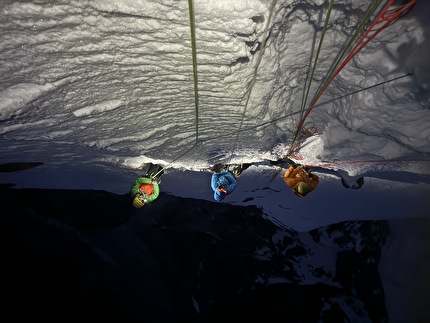
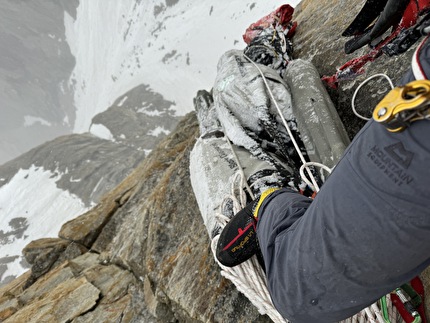
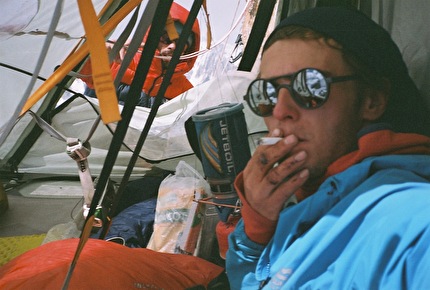
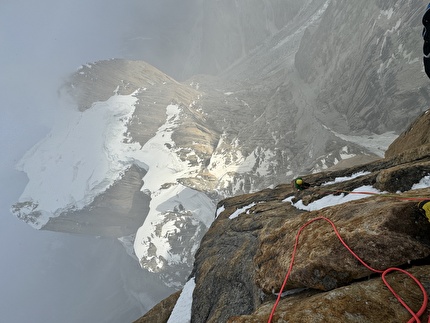
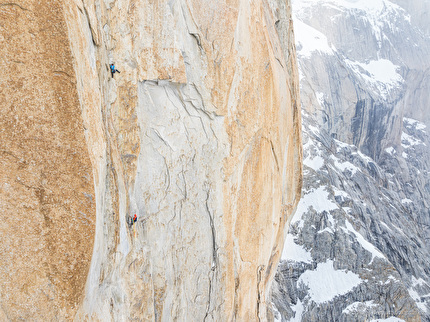
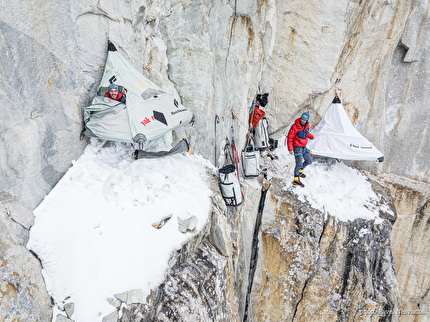
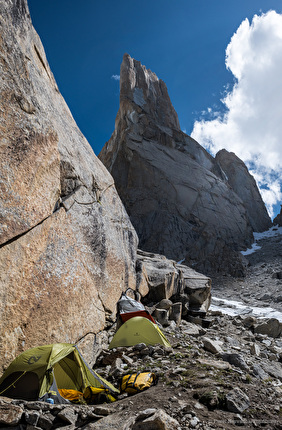
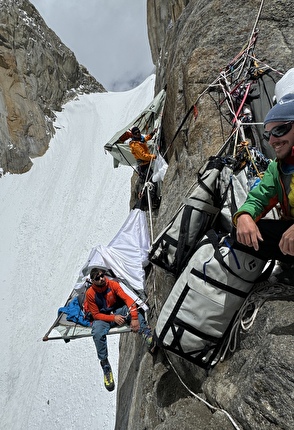
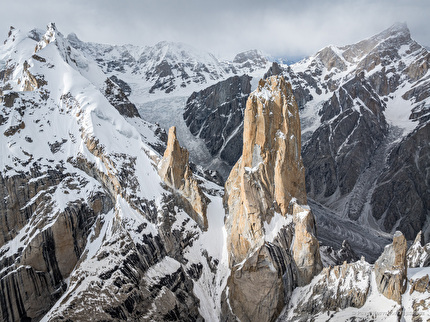
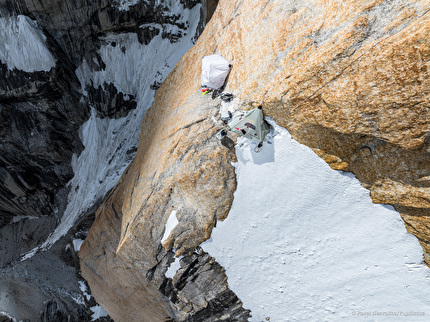
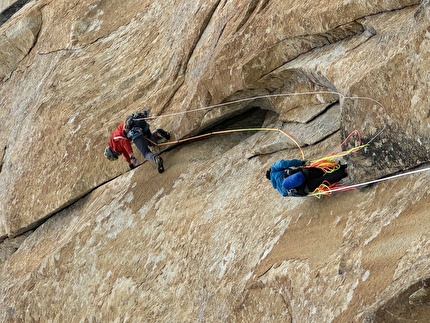
 See all photos
See all photos